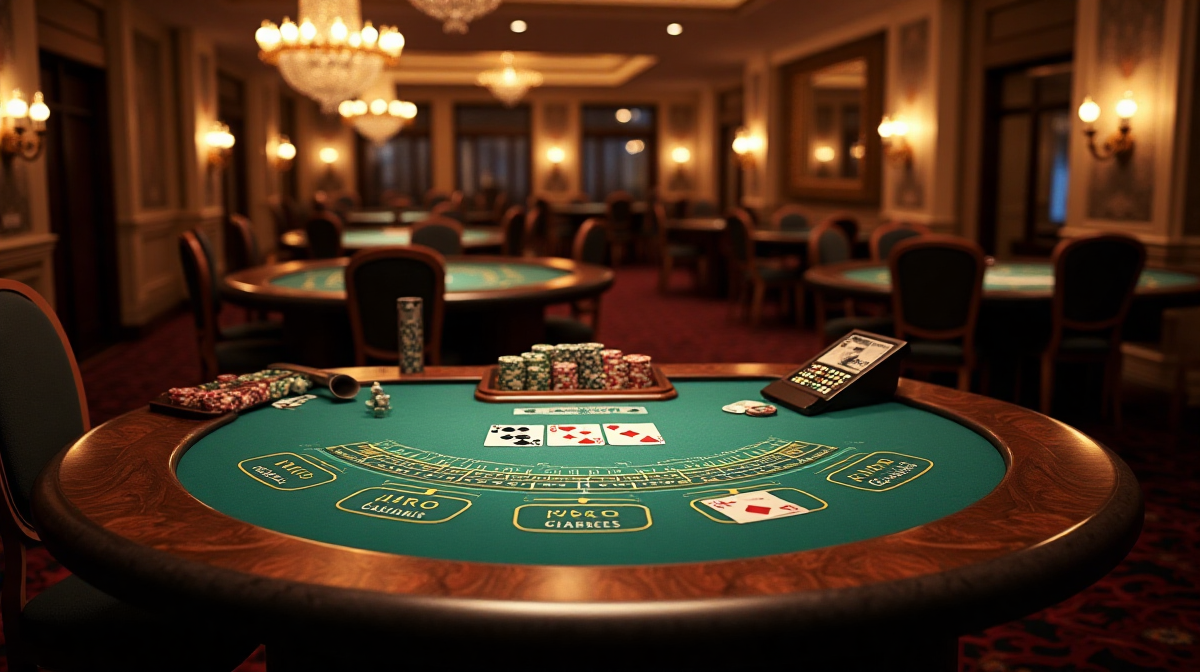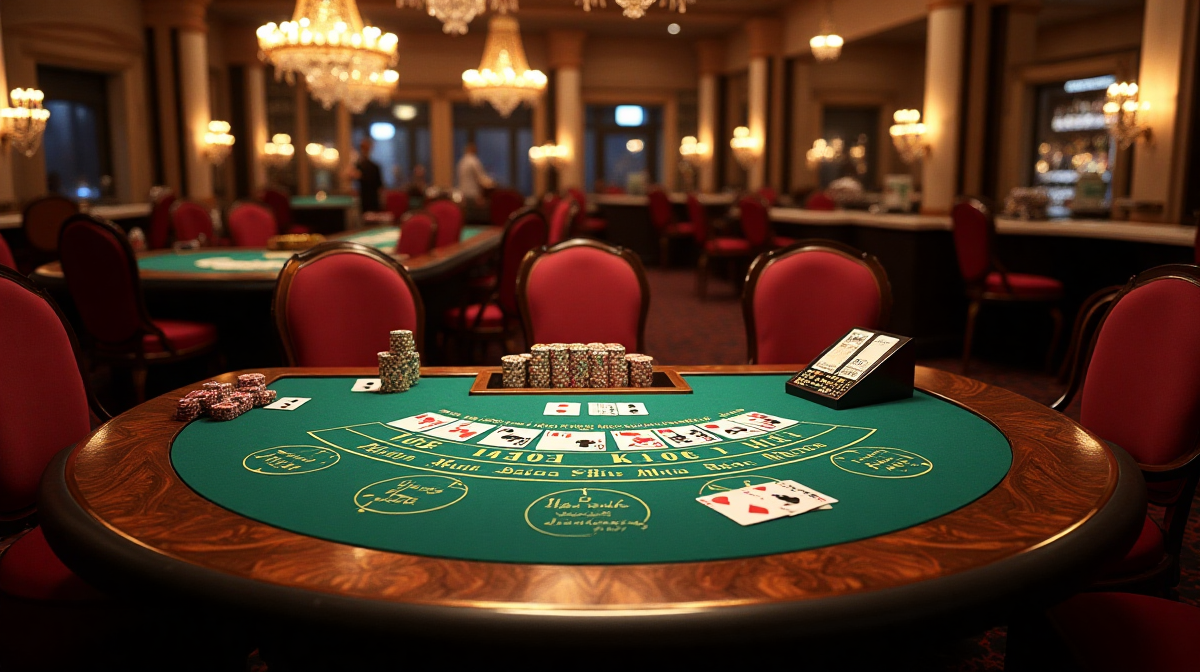Blackjack Rules: A Beginner's Guide (2024)
What is Blackjack?
Blackjack, also known as 21, is a casino game pitting players against the dealer. Its roots trace back to the French game Vingt-et-Un (Twenty-One), evolving over time into the game we know today. The objective is simple: beat the dealer by achieving a hand value as close to 21 as possible without exceeding it. Many players find the strategic depth appealing, especially when exploring options like playing at 22 bet casinos.
Why is Blackjack Popular?
Blackjack remains one of the most popular casino games globally for several reasons. Its relatively low house edge, compared to other games, attracts players who appreciate a fair chance of winning. The game combines luck with skill – strategic decisions significantly impact the outcome. Plus, the fast-paced action and social element contribute to its enduring appeal. Opportunities to play, including the convenience of a bet 22 platform, further boost its popularity.
Blackjack Terminology
Before diving into gameplay, understanding key terms is crucial. “Bust” means exceeding 21, resulting in an automatic loss. “Hit” signifies requesting another card, while “Stand” means ending your turn with your current hand. “Double Down” allows you to double your bet and receive one more card. “Split” allows you to separate a pair into two distinct hands. Familiarity with these terms will greatly enhance your understanding of the game.
Core Gameplay: How to Play Blackjack
The Goal of the Game
The primary goal in Blackjack is to have a hand value higher than the dealer’s, without going over 21. If you exceed 21, you “bust” and lose your bet, regardless of the dealer’s hand. Successfully achieving 21 with your initial two cards is called a “Blackjack” and results in a higher payout.
Card Values
Card values are straightforward. Numbered cards (2-10) retain their face value. Face cards (Jack, Queen, King) are each worth 10. An Ace can be worth either 1 or 11, depending on which value benefits the hand most. This flexibility of the Ace is a key element of Blackjack strategy.
The Deal
The game begins with each player placing a bet. The dealer then deals two cards face up to each player and two cards to themselves – one face up and one face down (the “hole card”). The sequence of actions follows from here, with players making decisions about their hands.
Player’s Turn
On your turn, you have several options. You can “Hit” to take another card, “Stand” to end your turn, “Double Down” to double your bet and receive one more card, or “Split” if you’ve been dealt a pair. These decisions should be based on your hand value, the dealer’s upcard, and basic strategy. Many casinos offer options to play online, even offering a 22 bet download for mobile access.
Dealer’s Turn
Once all players have completed their turns, the dealer reveals their hole card. The dealer must follow specific rules: they must hit if their hand value is 16 or less and stand if it's 17 or more. This standardized approach ensures fairness and consistency.
Winning & Losing
If your hand is higher than the dealer’s without busting, you win. If the dealer busts and you haven’t, you also win. If you and the dealer have the same hand value, it’s a “Push,” and your bet is returned. If the dealer’s hand is higher than yours without busting, you lose your bet.

Detailed Explanation of Player Actions
Hitting
Hitting involves taking another card to improve your hand. Generally, you should hit if your hand value is 16 or less, as the risk of busting is relatively low. However, consider the dealer’s upcard – a high upcard might encourage you to stand with a lower hand.
Standing
Standing means ending your turn without taking any further cards. You should stand when you’re satisfied with your hand value and believe it’s unlikely to improve without busting. A hand of 17 or higher is generally a good candidate for standing.
Doubling Down
Doubling down allows you to double your initial bet in exchange for receiving only one additional card. This is a risky move, but can be profitable in certain situations, such as when you have a hand of 11 or a hard 10 against a low dealer upcard.
Splitting Pairs
If you’re dealt a pair (two cards of the same rank), you have the option to split them into two separate hands, each with a bet equal to your original wager. Splitting can be advantageous with certain pairs, like Aces or 8s.
Surrendering
Some casinos offer a “Surrender” option, allowing you to forfeit half your bet and end your turn immediately. This is a useful tactic in unfavorable situations, such as holding a hard 16 against a dealer’s 10.
Insurance
If the dealer’s upcard is an Ace, you can purchase “Insurance,” which is a side bet that the dealer has Blackjack. Insurance costs half your original bet and pays 2:1 if the dealer has Blackjack. Generally, insurance is not a profitable bet in the long run.
Special Blackjack Hands & Scenarios
Blackjack
A “Blackjack” (also called a “Natural 21”) occurs when your initial two cards are an Ace and a 10-value card. This hand typically pays 3:2, offering a higher payout than a standard win.
Busting
“Busting” means exceeding a hand value of 21. When you bust, you automatically lose your bet, regardless of the dealer’s hand. Avoiding a bust is paramount to success in Blackjack.
Push
A “Push” occurs when you and the dealer have the same hand value. In this case, your bet is returned to you, and no money changes hands.
Soft vs. Hard Hands
A “Soft Hand” contains an Ace that can be counted as either 1 or 11 without causing the hand to bust. A “Hard Hand” does not have this flexibility. Understanding the difference is crucial for making informed decisions.
Blackjack Strategy – Basic Strategy Chart
Introduction to Basic Strategy
Basic strategy is a mathematically derived set of optimal plays for every possible hand combination. Using basic strategy significantly reduces the house edge and improves your chances of winning.
Understanding the Basic Strategy Chart
A basic strategy chart displays the optimal action (Hit, Stand, Double Down, Split) based on your hand value and the dealer’s upcard. It’s a visual guide to maximizing your expected return.
Using the Chart Effectively
To use the chart effectively, locate your hand on the chart and find the corresponding dealer upcard. The chart will indicate the optimal action to take. Practice using the chart until it becomes second nature.
Common Basic Strategy Scenarios
For example, if you have a hard 12 and the dealer shows a 4, 5, or 6, the chart will tell you to stand. If you have a soft 17 and the dealer shows a 2, 3, 4, 5, or 6, the chart will tell you to double down.
Blackjack Variations
Single Deck vs. Multi-Deck Blackjack
Single-deck Blackjack is played with one deck of cards, while multi-deck Blackjack uses multiple decks. Single-deck Blackjack generally offers a lower house edge but is less common.
European Blackjack
European Blackjack differs from American Blackjack in a few key ways. Typically, the dealer only receives one card face up, and players cannot double down after splitting pairs.
Spanish 21
Spanish 21 is a variation that removes the 10s from the deck and introduces bonus payouts for certain hands.
Live Dealer Blackjack
Live Dealer Blackjack provides an immersive online experience with a real dealer dealing cards via video stream. This offers a more authentic casino feel, and can be found on platforms like bet 22.

Blackjack Etiquette & Tips
Casino Etiquette
Be respectful to the dealer and other players. Avoid giving unsolicited advice and follow the casino’s rules.
Bankroll Management
Set a budget before you start playing and stick to it. Avoid chasing losses and gamble responsibly.
Common Mistakes to Avoid
Avoid hitting on a hard 17 or higher, and don’t take insurance unless you’re counting cards.
Resources for Further Learning
Numerous websites and books offer in-depth Blackjack strategy and analysis.
Frequently Asked Questions
What is the house edge in Blackjack?
The house edge in Blackjack varies depending on the rules and your strategy. Using basic strategy can reduce the house edge to as low as 0.5%.
Can I count cards in Blackjack?
Card counting is a technique that allows players to track the ratio of high to low cards remaining in the deck. While not illegal, casinos frown upon card counting and may ask suspected counters to leave. It requires significant skill and practice.
What is the best bet I can make in Blackjack?
The best bet in Blackjack is to consistently apply basic strategy. Avoid side bets like Insurance, as they generally have a high house edge.
Is online Blackjack fair?
Reputable online casinos use random number generators to ensure fair gameplay. However, it’s essential to choose a licensed and regulated casino.
Where can I play Blackjack online?
Blackjack can be played online at many casinos. Always verify the legality of online gambling in your jurisdiction before participating.

